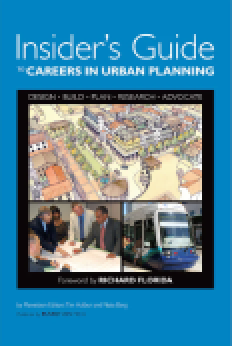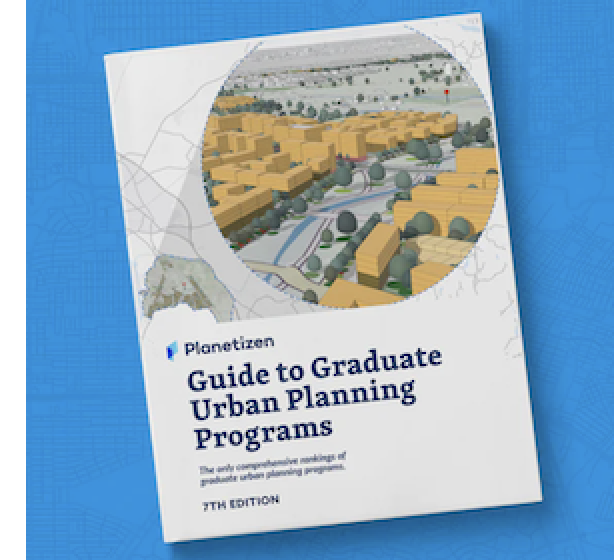In ‘Build, Baby, Build,’ economist Bryan Caplan makes the case for zoning deregulation in a graphic novel format.

Numerous books have been written about the evils of local regulations that limit housing supply: some seem designed to appeal primarily to scholars, while others are a little more geared to a popular audience. But in Build, Baby, Build, Caplan does something unique: make the case for land use deregulation in a graphic novel format, while addressing many of the counterarguments used to defend the status quo.
Caplan begins with a simple question: why are some places more expensive than others? For example, why is it that $1 million can purchase a mansion in Lubbock, Texas and something considerably more modest in San Francisco? Caplan suggests that the law of supply and demand presents an obvious answer, but adds that limited supply is caused by government regulation such as zoning. Caplan points out that the costs of zoning are not limited to the most expensive markets: he cites other scholars’ suggestions that while zoning increases housing costs by $1.6 million per acre in San Francisco, the “zoning tax” is a still-onerous $180,000 per acre in downtown Dallas.
While zoning rules that limit landowners to single-family homes are especially controversial, Caplan points out that a wide variety of other regulations also limit housing supply. For example, minimum parking requirements force developers to waste land that could be used for housing. Regulations that require developers to fix other societal problems (by forcing them to pay for lower-income housing or community amenities such as parks) also limit construction of new housing by making such construction more costly.
Caplan writes that land use deregulation would lower housing prices by increasing supply, and thus would, by reducing the overall cost of living, raise American living standards. He adds, however, that zoning deregulation and lower housing prices would have a variety of other benefits. For example, lower housing costs reduce inequality and homelessness: because the poor spend a higher share of their income on housing than the rich, the poor benefit from
But none of this seemed particularly new to me. What makes Caplan’s book unusual is that to a greater extent than other critics of zoning, Caplan takes time to discuss and criticize counterarguments, each of which are quoted and listed below.
1. “[t]here just isn’t enough land.” Caplan responds that even where buildings already occupy most of a city, it is possible to build up: that is, to build multi-story buildings where single-story buildings already exist. Caplan also points out that in many places, there is extra land that could be used for housing but is instead used for parking, due to government regulations dictating how much land must be used for parking.
2. “[m]ost people don’t want to live in skyscrapers.” Caplan responds by noting that even in areas where there is no consumer demand for tall buildings, there is often room to build houses and smaller apartments.
3. ”Monopolists must be choking off supply.” Caplan notes that this claim would make sense only if there are “tons of competing builders in Lubbock, but only a handful in the Bay Are and New York City”- a claim with no obvious factual support.
4. “I believe builders would make money with less regulation, but I don’t see why less regulation means lower prices.” Caplan explains that if builders and landlords are economically rational, they already charge the highest prices they can. So if new construction is allowed, owners of existing buildings will have to hold down prices to keep tenants.
5. “[If prices go down] the yuppies can afford [the most expensive cities]. How does that help the rest of us.” Caplan explains that even if new buildings are more expensive than older buildings, tenants of older buildings benefit. Why? Because when housing is sufficiently abundant, a tenant who leaves an older building to move to a newer one will be replaced by a slightly poorer tenant, because there simply aren’t enough wealthy tenants to go around.
6. “So pave the planet, eh?” Caplan explains that deregulation actually reduces suburban sprawl: When people can live more densely they use up less land, while a city that only allows low-density housing must expand into the countryside more rapidly in order to provide housing for all. For example, if people live in two 20-story buildings instead of one 40-story building, they use up twice as much land.
7. “Don’t taller buildings cost more to build?” Caplan questions whether this is the case, based on research showing that the per-foot construction cost “of building to seven stories is quite close to the per-square-foot cost of building 50 stories.”
8. “Development will make traffic even worse.” Caplan argues in response that zoning deregulation might reduce traffic congestion, for two reasons. First, if government allows dense housing near places with lots of jobs, some people can walk to work instead of driving. Second, allowing high-density housing makes mass transit economical, thus allowing even more people to avoid driving. Caplan adds that even if zoning reduces congestion in a heavily regulated area, regulation doesn’t eliminate the congestion. Instead, regulation merely moves congestion to wherever housing is ultimately built.
9. “[w]hat will become… of our lovely historic neighborhoods?” Caplan has three responses to this argument. First, not all older architecture is particularly distinguished, so there is no reason to freeze entire neighborhoods just because a few buildings are truly historic. Second, because truly attractive buildings are worth more, landowners may have an incentive to preserve them. Third, fear of new buildings is often based on an irrational status quo bias- “a built-in sense that change equals decline.” Why is this notion irrational? Because once we get used to a new status quo, whatever replaces it becomes just as old and cherished as the prior status quo.
Although Caplan certainly discusses many possible objections to deregulation, I do wish he had addressed a few other objections. One common argument against zoning reform is that more permissive zoning will lead to higher land costs and thus higher housing costs, because buildable land is more desirable to developers than not-so-buildable land. Because this argument seems at least superficially plausible, I wish that Caplan had responded to it. *And because other affluent countries have also experienced rising housing costs, I wish that Caplan had addressed the successes and failures of zoning policy in cities outside the United States.
Nevertheless, Caplan has provided the public with a valuable service: an easy-to-read explanation of the case for more housing and less zoning.
*I am not persuaded by this argument, for reasons I explained in this article.

New Florida Law Curbs HOA Power
The legislation seeks to cut down on ‘absurd’ citations for low-level violations.

New Tennessee Law Allows No-Cost Incentives for Affordable Housing
Local governments in the Volunteer State can now offer developers incentives like increased density, lower parking requirements, and priority permitting for affordable housing projects.

Planners’ Complicity in Excessive Traffic Deaths
Professor Wes Marshall’s provocatively-titled new book, "Killed by a Traffic Engineer," has stimulated fierce debates. Are his criticisms justified? Let’s examine the degree that traffic engineers contribute to avoidable traffic deaths.

Study: Housing Crisis is About Affordability, not Supply
New research shows that there is no overall shortage of housing units, but all U.S. metropolitan areas face a severe lack of affordable units for low-income renters.

Are Race-Based Lawsuits Affecting Community Lenders?
Shelterforce spoke with community lending leaders and experts about the current mood across the sector. What, if anything, are organizations doing to avoid becoming the next target of conservative activists?

New Park Promotes Community and Connectivity in Lewisville, Texas
The city of Lewisville just celebrated the opening of Glory Park/Parque la Gloria, helping to improve park access and the quality of life for residents.
City of Madera
City of Santa Clarita
Borough of Carlisle
HUD's Office of Policy Development and Research
Chaddick Institute at DePaul University
HUD's Office of Policy Development and Research
Colorado Energy Office
Pima County Community College District
City of Piedmont, CA
Write for Planetizen
Urban Design for Planners 1: Software Tools
This six-course series explores essential urban design concepts using open source software and equips planners with the tools they need to participate fully in the urban design process.
Planning for Universal Design
Learn the tools for implementing Universal Design in planning regulations.



















670d.png)

1784.png)






